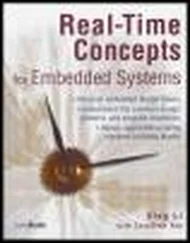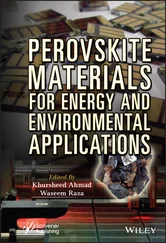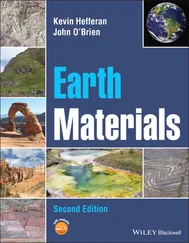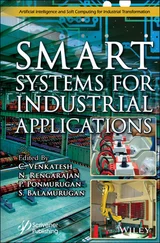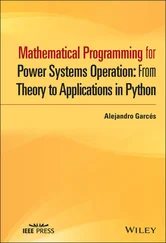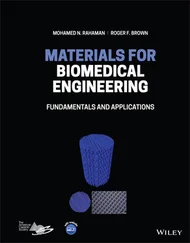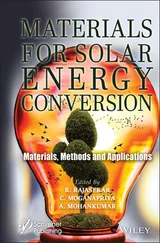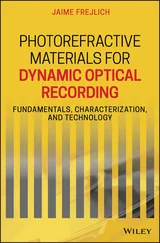1 Cover
2 1 General Introduction: Smart Materials, Sensors, and Actuators 1.1 Smart System 1.2 Device Application of Ferroelectric Materials 1.3 Device Application of Ferromagnetic Materials 1.4 Ferroelastic Material and Device Application 1.5 Scope of This Book References
3 2 Introduction to Ferroelectrics2.1 What Is Ferroelectrics? 2.2 Origin of Ferroelectrics 2.3 Theory of Ferroelectric Phase Transition 2.4 Ferroelectric Domains and Domain Switching 2.5 Ferroelectric Materials 2.6 Ferroelectric Domain and Phase Field Calculation References
4 3 Device Applications of Ferroelectrics 3.1 Ferroelectric Random‐Access Memory 3.2 Ferroelectric Tunneling Non‐volatile Memory 3.3 Pyroelectric Effect and Infrared Sensor Application 3.4 Application in Microwave Device 3.5 Ferroelectric Photovoltaics 3.6 Electrocaloric Effect References
5 4 Ferroelectric Characterizations 4.1 P–E Loop Measurement 4.2 Temperature‐Dependent Dielectric Permittivity Measurement 4.3 Piezoresponse Force Microscopy (PFM) 4.4 Structural Characterization 4.5 Domain Imaging and Polarization Mapping by Transmission Electron Microscopy References
6 5 Recent Advances in Ferroelectric Research 5.1 Size Limit of Ferroelectricity 5.2 Ferroelectricity in Emerging 2D Materials 5.3 Ferroelectric Vortex 5.4 Molecular Ferroelectrics 5.5 Ferroelectricity in HfO2 and ZrO2 Fluorite Oxide Thin Films 5.6 Ferroic Properties in Hybrid Perovskites References
7 6 Piezoelectric Effect: Basic Theory6.1 General Introduction to Piezoelectric Effect 6.2 Piezoelectric Constant Measurement 6.3 Equivalent Circuit 6.4 Characterization of Piezoelectric Resonator Based on a Resonance Technique References
8 7 Piezoelectric Devices 7.1 Piezoelectric Ultrasonic Transducers 7.2 Ultrasonic Motor 7.3 Surface Acoustics Wave Devices References
9 8 Ferromagnetics: From Material to Device 8.1 General Introduction to Ferromagnetics 8.2 Ferromagnetic Phase Transition: Landau Free‐Energy Theory 8.3 Domain and Domain Wall 8.4 Magnetoresistance Effect and Device 8.5 Magnetostrictive Effect and Device Applications 8.6 Characterizations of Ferromagnetism 8.7 Hall Effect References
10 9 Multiferroics: Single Phase and Composites9.1 Introduction on Multiferroic 9.2 Magnetoelectric Effect 9.3 Why Are There so Few Magnetic Ferroelectrics? 9.4 Single Phase Multiferroic Materials 9.5 ME Composite Materials 9.6 Modeling the Interfacial Coupling in Multilayered ME Thin Film References
11 10 Device Application of Multiferroics 10.1 ME Composite Devices 10.2 Memory Devices Based on Multiferroic Thin Films 10.3 Memory Devices Based on Multiferroic Tunneling References
12 11 Ferroelasticity and Shape Memory Alloy 11.1 Shape Memory Alloy 11.2 Ferromagnetic Shape Memory Alloys References
13 Index
14 End User License Agreement
1 Chapter 2 Table 2.1 Crystallographic classification according to crystal centrosymmetry.
2 Chapter 3Table 3.1 Pyroelectric coefficient of some typical pyroelectric materials.Table 3.2 Pyroelectric figures of merit of some typical pyroelectric materials.Table 3.3 Comparison of the properties of GaAs, MEMS, and BST thin film.
3 Chapter 5Table 5.1 The ferroelectric properties of HfO 2films with various dopants (O: obs...Table 5.2 Calculated properties of four hybrid lead halide perovskites from dens...
4 Chapter 6Table 6.1 Piezoelectric properties of representative piezoelectric materials.Table 6.2 Resonance modes of the five geometries and their related piezoelectric...Table 6.3 The assumption for specific samples ( l – length, w – width, t – thickn...
5 Chapter 7Table 7.1 Acoustic impedances of materials.Table 7.2 Comparison of some piezoelectric materials properties.Table 7.3 Comparison of shear acoustic velocity of substrate materials.
6 Chapter 8Table 8.1 Fundamental properties showing analogies between ferromagnetism and fe...Table 8.2 Properties of magnetostrictive effect of some ferromagnetic materials.
7 Chapter 9Table 9.1 Parameters used in calculating the polarization of the PZT film and PZ...
1 Chapter 1 Figure 1.1 AI beats human chess player. Figure 1.2 A cross‐bar structure of synapse and artificial neuron networks bas... Figure 1.3 (a) Photo of a remote control copter and (b) diagram of a PID feedb... Figure 1.4 FEM simulations of three resonant motions in a PZT‐based gyroscope ... Figure 1.5 Diagram showing coupling between different moduli and the clarifica... Figure 1.6 Piezoelectric materials‐based sonar system for car (a) and submarin... Figure 1.7 (a) Transducers and (b) B‐mode image of a wire phantom acquired wit... Figure 1.8 Illustration of concept of a ultrasonic transducer‐based fingerprin... Figure 1.9 A photo of an infrared detector (a) and illustration of its interna... Figure 1.10 Schematic diagram of field‐effect transistor (FET) and the current... Figure 1.11 Schematic diagram of spin valve structure where arrows indicate th... Figure 1.12 Outline of ME device from Virginia Tech and schematic of the cross... Figure 1.13 Phase transition between high temperature austenite phase and low ... Figure 1.14 (a) Brace of orthodontia using shape memory alloys and (b) arthrod...
2 Chapter 2 Figure 2.1 Typical P – E loop from a ferroelectric crystal. Insets illustrate do... Figure 2.2 Schematic diagram showing the origin of the electric polarization. Figure 2.3 Relationships of the piezoelectric, ferroelectric, pyroelectric, an... Figure 2.4 Illustration of crystal structure symmetry breaking‐induced ferroel... Figure 2.5 Starting from the original cubic structure (a), if (b) is stabilize... Figure 2.6 In situ Raman spectra of BaTiO 3particles measured at different tem... Figure 2.7 (a) Free energy, (b) dielectric constant and spontaneous polarizati... Figure 2.8 (a) Free energy, (b) dielectric constant and spontaneous polarizati... Figure 2.9 (a) Ferroelectric domain structure in BaTiO 3and (b) cloverleaf dom... Figure 2.10 Illustration of polarization switching by electric field and mecha... Figure 2.11 Illustration of BaTiO 3structures at different temperatures showin... Figure 2.12 Dielectric constant of SrTiO 3single crystal as a function of temp... Figure 2.13 Lattice constant of (Ba xSr 1−x)TiO 3(both bulk and films) as ... Figure 2.14 The phase transition behavior (the dielectric constant as a functi... Figure 2.15 Bias field dependence of (Ba xSr 1−x)TiO 3dielectric constant ... Figure 2.16 (a) Perovskite structure of PbTiO 3in the cubic form above T cand ... Figure 2.17 (a) Typical P–E loop of antiferroelectric and (b) structure ... Figure 2.18 The typical electric displacement verses electric field ( D–E Figure 2.19 PZT phase diagram. The crossover between M Band M Astructures is m... Figure 2.20 (a) Frequency‐dependent relative permittivity and (b) P–E lo... Figure 2.21 Polar mechanisms in relaxor ferroelectric materials as postulated ... Figure 2.22 Piezoresponse force images of various compositions of (001)‐orient... Figure 2.23 SEM image of laminate structure of PMN‐0.35PT crystal (courtesy of... Figure 2.24 Phase diagram of PMN‐ x PT. Figure 2.25 The polarization vectors in pseudocubic perovskite unit cell. The ... Figure 2.26 Schematic illustration of the mechanism of the reversible domain s... Figure 2.27 Two‐dimensional simulation of the structural transformation from c...
3 Chapter 3Figure 3.1 (a) FeRAM device and structural diagram (1T1C) made by Fujitsu, whe...Figure 3.2 Illustration of surface charges generated in a ferroelectric layer ...Figure 3.3 (a) Diagram of the 1T FeRAM based on a field‐effect transistor with...Figure 3.4 Energy band diagram of a ferroelectric tunnel junction. Polarizatio...Figure 3.5 (a) Illustration and (b) voltage dependence of the current density ...Figure 3.6 Out‐of‐plane PFM (a) phase and (b) amplitude measurements on Au/Co/...Figure 3.7 (a) Schematic drawings of the metal/ferroelectric/semiconductor str...Figure 3.8 (a) Tunneling resistance with varying maximum (positive or negative...Figure 3.9 (a) Illustration of in‐plane strain effect and (b) the correspondin...Figure 3.10 Schematic setup of dynamic pyroelectric coefficient measurement sy...Figure 3.11 (a) Diagram of pyroelectric infrared sensor, (b) decreased polariz...Figure 3.12 (a) Basic structure and (b) circuit of a pyroelectric detector.Figure 3.13 Experimental setup for infrared sensor characterization.Figure 3.14 (a) A schematic view of the ferroelectric gate FET, (b) the workin...Figure 3.15 (a) Antenna devices with tunable BST layer acting as a distributed...Figure 3.16 Schematic illustration of the physical mechanism of the photovolta...Figure 3.17 The structure of polymer photovoltaic devices with FE interfacial ...Figure 3.18 Current density–voltage (
Читать дальше

